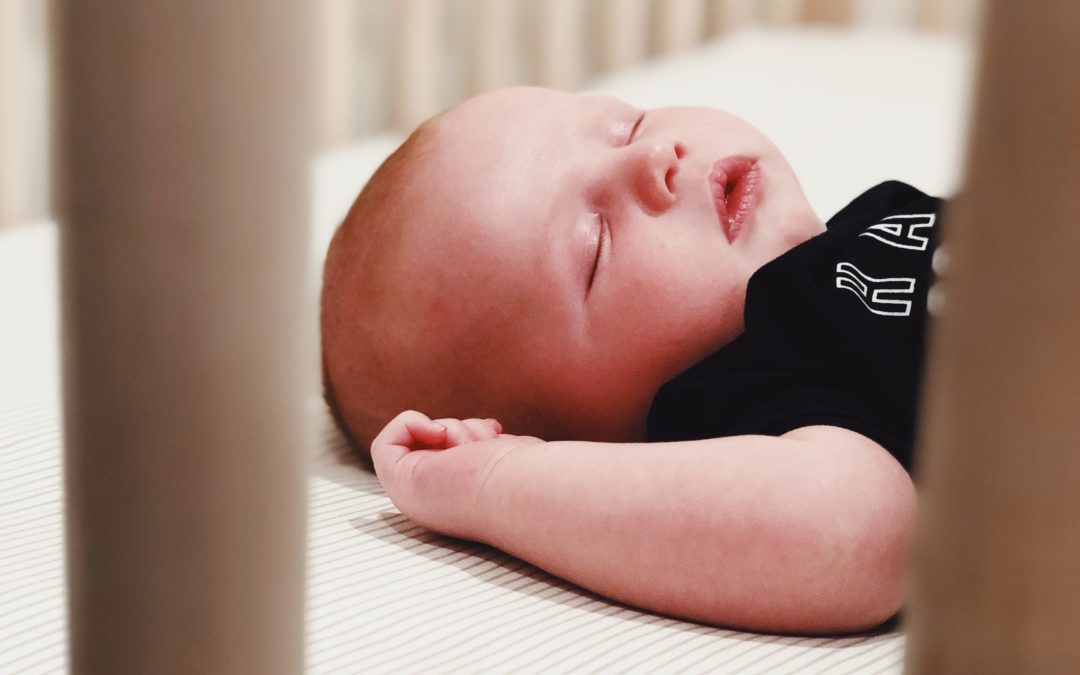For the parents and nannies of infants, the risk of Sudden Infant Death Syndrome (SIDS) is a constant concern. The unexplained phenomenon kills about 3,500 infants each year, and it’s especially scary for parents and caregivers because doctors aren’t entirely sure what causes it. Even though it’s referred to as a “syndrome,” SIDS is actually a blanket term used to describe the unexplained deaths of otherwise healthy infants who are less than a year old. The deaths usually occur in sleep, and they could be related to brain defects, respiratory infections, or any number of other causes, but the medical community has yet to reach a consensus about one specific cause.
What they have been able to do successfully is to identify some of the factors that can increase a baby’s risk of SIDs. This started in the ‘90s when the AAP launched their “Back to Sleep” campaign, which encouraged parents to always put infants to sleep on their backs. As a result of this and other safe sleep initiatives, SIDS rates declined exponentially, from about 130 deaths per 100,000 live births in 1990 to 38 deaths per 100,000 live births by 2016. That’s why knowing and understanding the latest guidelines is so important.
Every few years, the AAP makes small changes and updates to their guidelines, and it’s vital that any person who cares for an infant understands the latest information about how to put that baby to sleep safely. Historically, says Richard Pass, a registered nurse and the founder of Save A Little Life, any infant who died for unknown reasons was put into the category of having died from SIDS. But not every baby who died mysteriously was a victim of SIDS — some of them actually died of strangulation or suffocation, and that is a major part of the reason why safe sleep guidelines were born.
The guidelines aim at stopping unexplained deaths that were previously attributed to SIDS but may actually have been preventable, such as a baby suffocating under a blanket or becoming overheated. According to Pass, the must-know takeaways from the current guidelines are:
- Babies should always be put to sleep on their backs, until they start rolling over by themselves (which usually happens around 4 to 5 months of age, says Pass).
- Once babies can roll over, they should no longer be swaddled, as this prevents them from being able to move if they roll over onto their stomachs.
- Babies should sleep on a firm mattress with just a fitted sheet and no additional blankets, stuffed animals, pillows, or toys.
- Babies should never be put to sleep on soft surfaces, such as on a couch, and they should not be left to sleep in devices that aren’t approved for sleep, such as in a bouncy chair.
- Babies should sleep in rooms that are well-ventilated and sleep in light clothing, as overheating can increase the risk of SIDS. “Ambient room temperatures being somewhere between 70 to maybe 72 or 73 degrees is pretty much ideal for most infant sleeping areas,” says Pass.
Pass says he recognizes that the guidelines turn the modern infant crib into a pretty “barren” place, but that’s what research supports. “[It’s] just a baby, you know, on a mattress, on a sheet, sans blankets and all those other things that a lot of parents had in there for so long,” he says. So, in other words, skip the cutesy crib bedding sets for a while, or at least pull them off the mattress before putting the baby to sleep. The AAP has even issued a warning against the use of crib bumpers, as they can present an entrapment risk for babies who can roll over.
Lastly, many parents and caregivers also wonder about bed-sharing and co-sleeping. While the AAP recommends that babies room in, or co-sleep, with their parents for the first year, they do not recommend that infants share a bed with their parents. For parents and caregivers who prefer to sleep close to a baby, the natural parenting expert Dr. Sears recommends a bedside co-sleeper that allows you to be within arm’s reach without actually sharing a mattress.
The SIDS risk for most children decreases dramatically around age 1, but it’s still a good idea to check with your child pediatrician before allowing them to sleep with a bunch of pillows, stuffed animals, or other potential hazards.
It may be years before researchers are able to determine an exact explanation for what causes SIDS, but safe sleep guidelines have proven successful in preventing thousands of infant deaths since they were put into place over two decades ago, and knowing these tips will help give any baby in your care the best possible chance of staying safe and healthy while they snooze.

